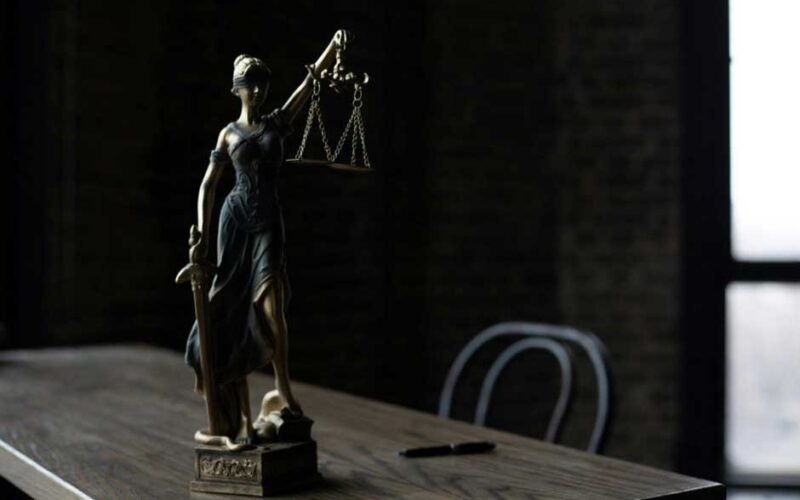In Austin, Texas, premises liability hinges on a property owner’s duty of care towards visitors. Negligence arises when this duty is breached, such as failing to address hazardous conditions like slippery floors or broken railings. For a successful claim, the injured party must prove this breach directly caused their injuries, leading to quantifiable damages. Understanding the nuances of duty, visitor classification, and recent legal precedents is essential for maneuvering these complex cases effectively.
Understanding Premises Liability in Texas
Premises liability in Texas is a legal doctrine that holds property owners and occupiers accountable for injuries occurring on their premises due to unsafe conditions. The law emphasizes the significance of premises safety and diligent property maintenance to prevent accidents. Property owners must guarantee that their spaces are free from hazards that could cause harm to visitors. This includes routine inspections and addressing potential dangers promptly. Failure to maintain a safe environment can result in legal consequences if an injury occurs. By adhering to proper maintenance protocols, property owners can mitigate risks and protect themselves from liability claims. Understanding the intricacies of Texas premises liability law is essential for property owners to safeguard against negligence allegations and guarantee the well-being of their visitors.
Duty of Care Owed by Property Owners
Property owners in Texas are required to uphold a specific duty of care to guarantee the safety of those who enter their premises. This obligation encompasses a range of property owner responsibilities aimed at ensuring visitor safety expectations are met. Owners must regularly inspect their property to identify and rectify potential hazards. This includes maintaining safe walkways, adequate lighting, and functional safety equipment. Failure to do so could result in legal liability if an injury occurs due to negligence. Property owners are expected to warn visitors of any known dangers that cannot be immediately fixed. This duty of care is a fundamental aspect of premises liability law in Austin, Texas and serves to protect the rights and well-being of visitors.
Types of Visitors and Their Rights
In premises liability cases, the classification of visitors plays an essential role in determining the extent of a property owner’s duty of care. Visitors are typically categorized as invitees, licensees, or trespassers. Invitees, such as customers in a store, are owed the highest duty of care. Property owners must guarantee safe conditions and warn invitees of any known hazards. Invitee rights are paramount, requiring regular inspections and maintenance. Licensees, including social guests, enter for their own purpose but with permission. Property owners have a duty to warn licensees of known dangers not apparent to them. Licensee responsibilities involve being aware of potential hazards. Trespassers, generally, are owed the least duty, primarily avoiding willful harm, unless they are minors or exceptions apply.
Common Hazards Leading to Premises Liability Claims
Liability often hinges on the presence of hazards that a reasonable property owner should have addressed. Common hazards include slippery floors, often resulting from spills or poor maintenance, which can lead to serious falls. Inadequate lighting may obscure potential dangers, increasing the risk of accidents. Broken railings pose a considerable threat, especially on stairways, potentially causing severe injuries. Uneven surfaces can trip visitors, particularly when not clearly marked with appropriate signage. The absence of such signage may exacerbate risks, making it difficult for visitors to navigate safely. Poor maintenance practices contribute greatly to these hazards, as they prevent timely repairs and proper upkeep. Property owners in Austin, Texas, must be vigilant in mitigating these risks to avoid premises liability claims.
Proving Negligence in Premises Liability Cases
To establish negligence in premises liability cases, a plaintiff must demonstrate the existence of a duty of care owed by the property owner or occupier. This includes proving a breach of that duty, where the defendant failed to act as a reasonable person would under similar circumstances. Additionally, the plaintiff must show causation, linking the breach directly to the injuries sustained, and quantify the resulting damages to recover compensation.
Duty of Care
Establishing a duty of care is foundational in proving negligence in premises liability cases. In Austin, Texas, landowners and occupiers are legally required to maintain reasonably safe conditions on their properties. This legal duty varies based on the classification of the visitor—invitee, licensee, or trespasser. For instance, invitees, such as customers in a store, are owed the highest duty of care, requiring property owners to inspect and rectify potential hazards. Negligence examples include failing to fix a known slippery floor or not warning about it. Legal definitions clarify that the duty of care hinges on foreseeability and reasonableness. In premises liability cases, demonstrating this duty is essential for clients seeking compensation, as it directly impacts the legal assessment of negligence.
Breach of Duty
While establishing a duty of care is crucial, proving a breach of that duty is essential in demonstrating negligence in premises liability cases. In Austin, Texas, liability standards dictate that property owners must maintain reasonably safe conditions. Breach examples include failing to repair hazardous conditions like broken stairs or not providing adequate warning signs for slippery floors. To prove a breach, it is necessary to show that the property owner did not act as a reasonable person would under similar circumstances. This involves evaluating whether the owner knew or should have known about the dangerous condition and neglected to correct it. Expert testimony and documentation of the unsafe condition can bolster a claim, aligning with liability standards to secure a favorable outcome.
Causation and Damages
In premises liability cases, causation and damages are frequently critical components in proving negligence. Establishing causation requires meeting causation standards, which involves demonstrating a direct link between the property owner’s breach of duty and the plaintiff’s injury. The plaintiff must prove that the negligence was both the actual cause and the proximate cause of their harm. Once causation is established, a thorough damages assessment follows. This involves evaluating the extent of the plaintiff’s injuries, both physical and emotional, as well as any financial losses incurred, such as medical expenses and lost wages. In Austin, Texas, demonstrating these elements effectively can greatly influence the outcome of a premises liability case, ensuring that clients receive fair compensation for their losses.
The Role of Comparative Negligence in Texas
In Texas, the principle of comparative negligence plays a pivotal role in premises liability cases by determining the proportional allocation of fault among involved parties. This allocation directly influences the compensation amounts that plaintiffs may receive, as their recovery is reduced by their percentage of fault. Legal defense strategies often focus on maximizing the plaintiff’s assigned fault to minimize potential liabilities for defendants.
Understanding Fault Allocation
Allocating fault in premises liability cases in Texas involves understanding the state’s application of comparative negligence. Texas follows a modified comparative negligence rule, which requires careful fault determination among all parties involved, including property owners and visitors. The responsibility of the visitor is a critical factor in this assessment; if a visitor fails to exercise reasonable care for their own safety, it can affect their ability to recover damages. Under Texas law, a claimant cannot recover damages if they are found to be more than 50% at fault for their injuries. The court meticulously evaluates each party’s actions, weighing visitor responsibilities against the negligence of the property owner, to establish a fair allocation of fault in the context of premises liability.
Impact on Compensation Amounts
The determination of compensation amounts in Texas premises liability cases is intricately linked to the state’s modified comparative negligence rule. Under this legal framework, a plaintiff’s recovery is directly influenced by their percentage of fault. Compensation calculations are adjusted accordingly, with claimants unable to recover damages if deemed more than 50% responsible for the incident. This approach guarantees equitable outcomes while considering the plaintiff’s conduct. In evaluating damages, both economic losses and emotional distress are examined. Emotional distress, a non-economic damage, is particularly scrutinized to guarantee fair compensation reflective of the plaintiff’s suffering. Consequently, understanding how comparative negligence influences these calculations is vital for accurately predicting potential recovery and advising clients effectively in premises liability matters.
Legal Defense Strategies
Understanding how comparative negligence impacts compensation lays the groundwork for strategic legal defenses in Texas premises liability cases. In Texas, the doctrine of comparative negligence allows a property owner to argue that the injured party’s own negligence contributed to the accident. This is pivotal in crafting legal defenses, as it can reduce the compensation the plaintiff is entitled to receive. Under Texas law, if a plaintiff is found to be more than 50% responsible for their injuries, they may be barred from recovering damages altogether. Consequently, demonstrating the plaintiff’s contribution to the incident becomes a key strategy for property owners. This approach not only mitigates potential liability but also emphasizes the necessity of thorough evidence collection and presentation in premises liability litigation.
Recent Case Precedents in Austin
In the evolving landscape of premises liability law, recent case precedents in Austin provide essential insights into how courts are currently interpreting negligence. Recent rulings have highlighted the critical role of property owners’ duty to maintain safe environments. Detailed case analysis reveals that courts emphasize the foreseeability of harm and the reasonable measures taken to prevent it. For instance, a notable case involved a slip-and-fall incident where the court scrutinized the owner’s inspection protocols. The decision underscored the necessity of regular and adequate maintenance checks. These precedents serve as a guide for clients maneuvering premises liability claims, illustrating the importance of documented safety measures and proactive hazard management. Understanding these legal nuances is paramount for effectively addressing potential negligence allegations.
Defenses Available to Property Owners
Although premises liability cases often emphasize the responsibilities of property owners, they also have a range of defenses at their disposal to counter negligence claims. One prevalent defense is demonstrating the presence of adequate insurance coverage, which can mitigate financial repercussions and show proactive risk management. Additionally, property owners may utilize liability waivers as a strategic defense mechanism. These waivers, when properly executed, can effectively limit the owner’s responsibility for certain injuries, provided they meet legal standards of clarity and voluntariness. Owners can argue that the injured party assumed the risk by entering the premises, particularly in situations where waivers were signed. Moreover, asserting the lack of owner knowledge about hazardous conditions can also serve as a viable defense in these cases. Experienced premises liability lawyers in Austin can help navigate these complex defenses and determine the best legal approach for your specific situation.
Steps to Take if Injured on Someone Else’s Property
Many individuals who find themselves injured on someone else’s property may be unaware of the essential steps that need to be taken to protect their legal rights. Initially, it is important to seek immediate medical attention, ensuring that injury documentation is thorough and accurate. This documentation serves as significant evidence in any subsequent legal proceedings. Additionally, notifying authorities is a critical step; this may involve filing a police report or notifying local safety officials, which creates an official record of the incident. Furthermore, collecting contact information of witnesses and taking photographs of the accident scene can further support one’s claim. Consulting with a legal professional experienced in premises liability cases in Austin, Texas, will provide guidance tailored to the victim’s specific circumstances.
Frequently Asked Questions
How Long Does a Premises Liability Case Typically Take in Austin?
The case duration for a premises liability case in Austin depends on the legal process’s complexity, often ranging from several months to a few years. Factors include evidence gathering, negotiations, and court scheduling, impacting the timeline considerably.
Can Tenants Be Held Liable for Accidents on Leased Property?
Tenants can be liable for accidents on leased property if their negligence contributed to the incident. Tenant responsibilities outlined in lease agreements play a vital role in determining liability, emphasizing adherence to safety and maintenance obligations.
What Compensation Can Victims Seek in Premises Liability Cases?
In premises liability cases, victims can seek compensation types such as medical expenses, lost wages, and pain and suffering. Protecting victim rights, legal experts guarantee clients receive fair settlements for their injuries and damages sustained on the property.
Are There Any Time Limits to File a Premises Liability Claim?
In Austin, Texas, premises liability claims generally have a two-year filing deadline from the incident date. Legal exceptions may apply, such as tolling for minors or discovery rules, potentially extending the time to file.
How Does Insurance Impact Premises Liability Cases in Austin?
In Austin, insurance coverage greatly influences premises liability cases by determining financial responsibility. Liability limits establish the maximum payout for claims. Understanding these factors is essential for clients to assess potential compensation and risks effectively.










